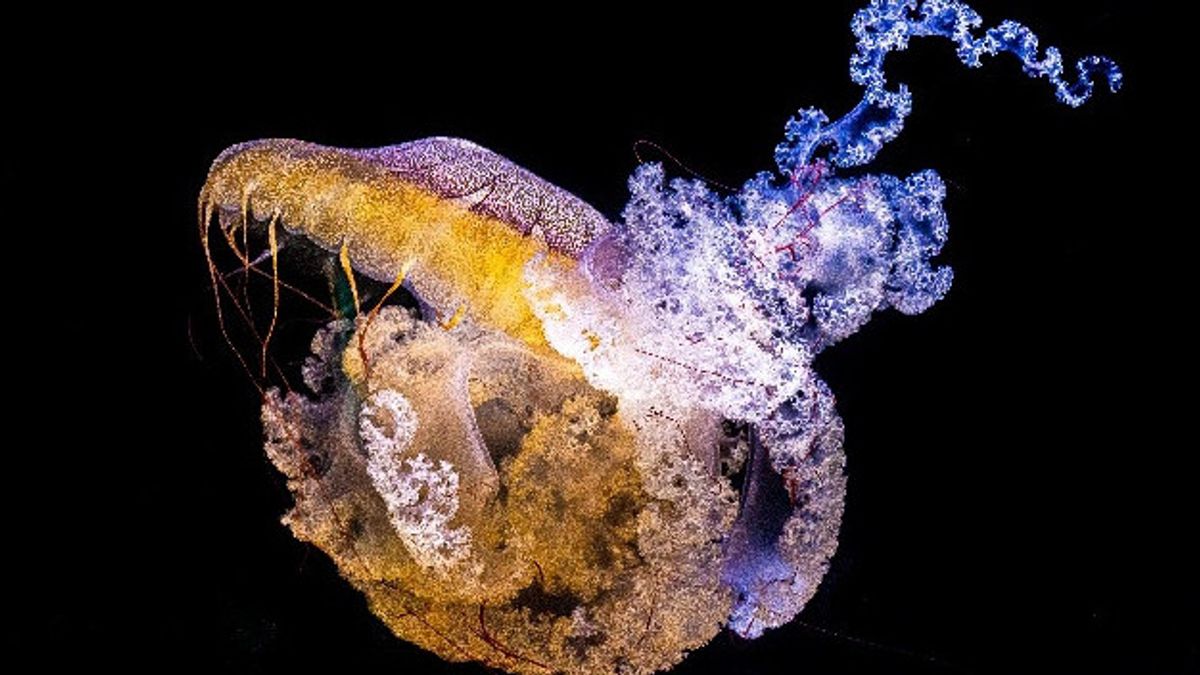JAKARTA - A 505 million-year-old magnified fossil was discovered intensive Shale, Canada. This animal is listed as the oldest known swimmer species.
The crown is well preserved in the site, which is indeed well known as the region with the largest and most preserved fossil numbers ever found there.
With the discovery of the fossil, it shows that the oldest cultivator consists of 95 percent water and has approximately 90 chickens capable of capturing prey large enough.
This new species, named haramodususa phasmiformist, resembles a great cultivator who swims with a trunk-shaped body or a 20-cm high bell.
Hismodedusa phasmiformis, included in the group of medusozoans, is named after the Greek myth about hapha who is similar to his appearance.
She is a woman herself where her hair turns into a snake and a terrible face that will turn people into stones, after disappointing the goddess Athena.
Currently, medusozoans include boxvalows, hydroids, straddling, true cultivators. They are part of one of the oldest animal groups ever on Earth, called Cnidaria, which is a marine anemon.
Cnidaria, a group containing more than 11,000 species of water animals found in freshwater and sea environments, has a complex life cycle with one or two body shapes, such as a vas (polyp) as well as a bell and gibbon (medusa).
As a result of the scarcity offertile fossils, their evolutionary history has largely been studied through the microscopic larvae stage and findings from the molecular study of livingfertilizers.
The discovery of Phasmiformist damodedusa has shown that the food chain of Kambrium is much more complex than previously imagined, as quoted by The Guardian and Metro, Wednesday, August 2.
"The Act, together with their relatives, is very difficult to describe in Kambrium's fossil record even though it is part of one of the earliest animal groups," said study author Joe Moysiuk, a paleontological student at the University of Toronto.
اقرأ أيضا:
"These findings are unquestionable that they were swimming at the time," he added.
Dr Jean-Bernard Caron, co-author of the study, added that the fossil record showsMONs are efficient predators. This is because it adds to the complexity of the Kambrium food net, and it is like Anomalouris who live in the same environment.
"Finding a very delicate animal preserved in the rock layer at the top of this mountain is an extraordinary discovery," said Caron.
"This adds another extraordinary animal lineage thatuan Shale has preserved in recording the evolution of life on Earth," he added.This study has been published in the journal Proceeding Royal Society B.
The English, Chinese, Japanese, Arabic, and French versions are automatically generated by the AI. So there may still be inaccuracies in translating, please always see Indonesian as our main language. (system supported by DigitalSiber.id)












